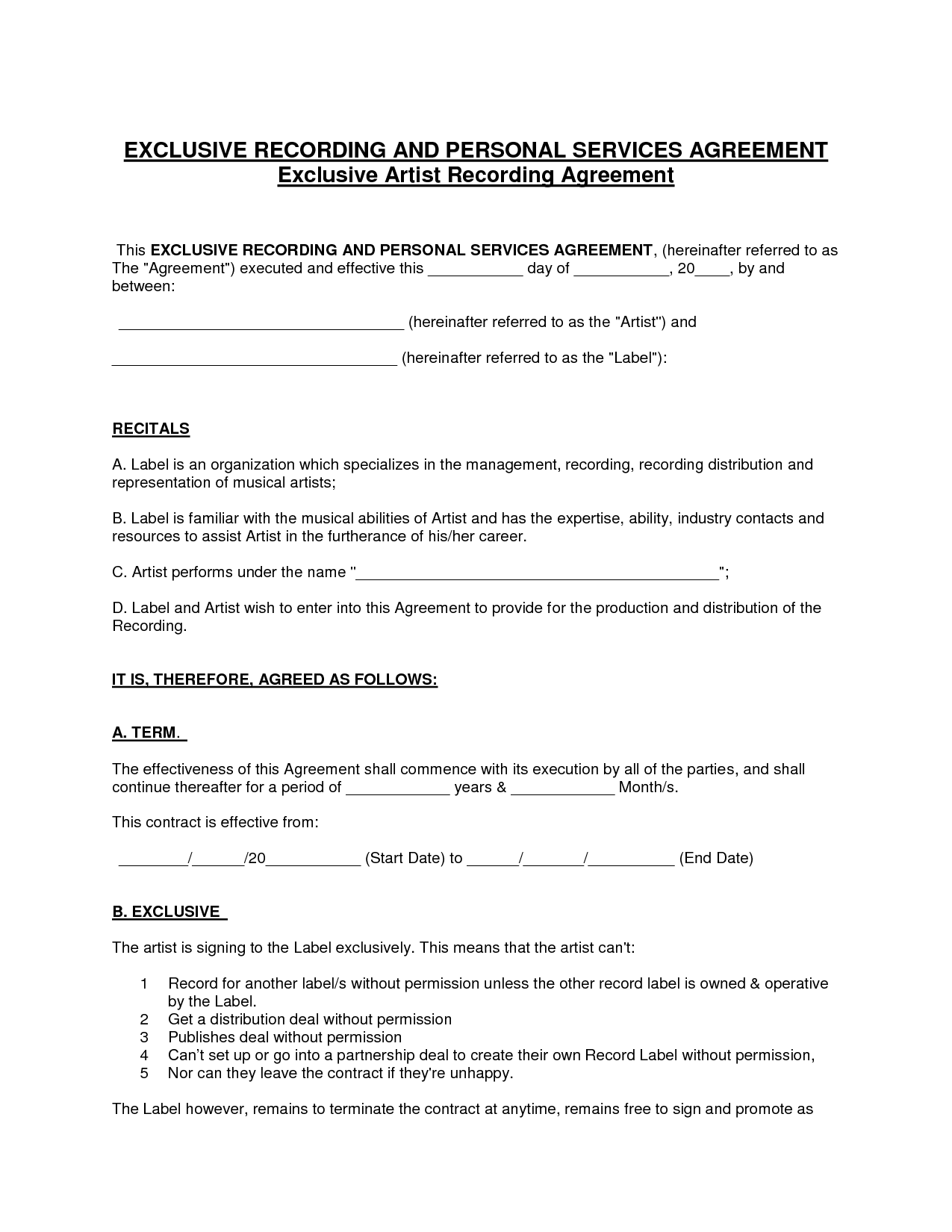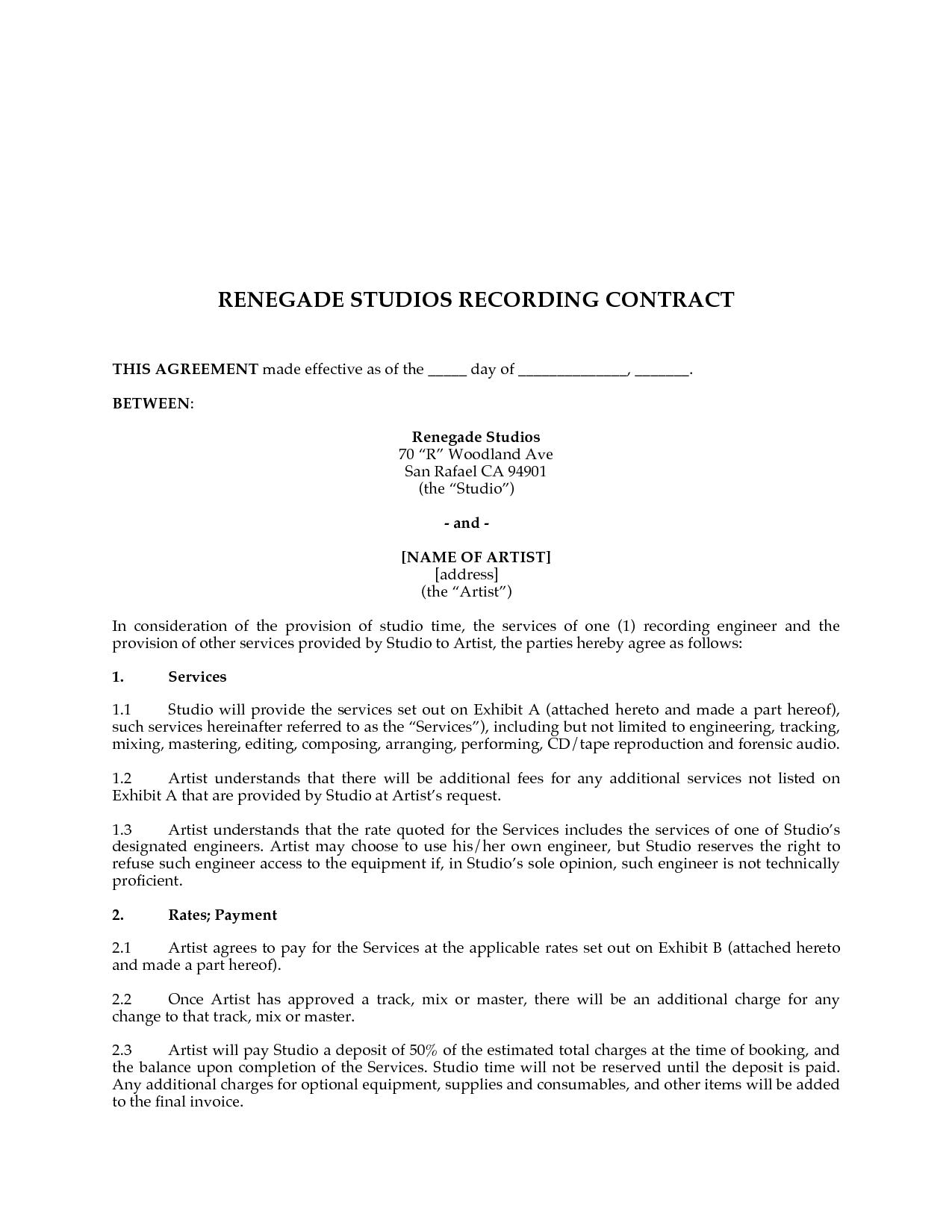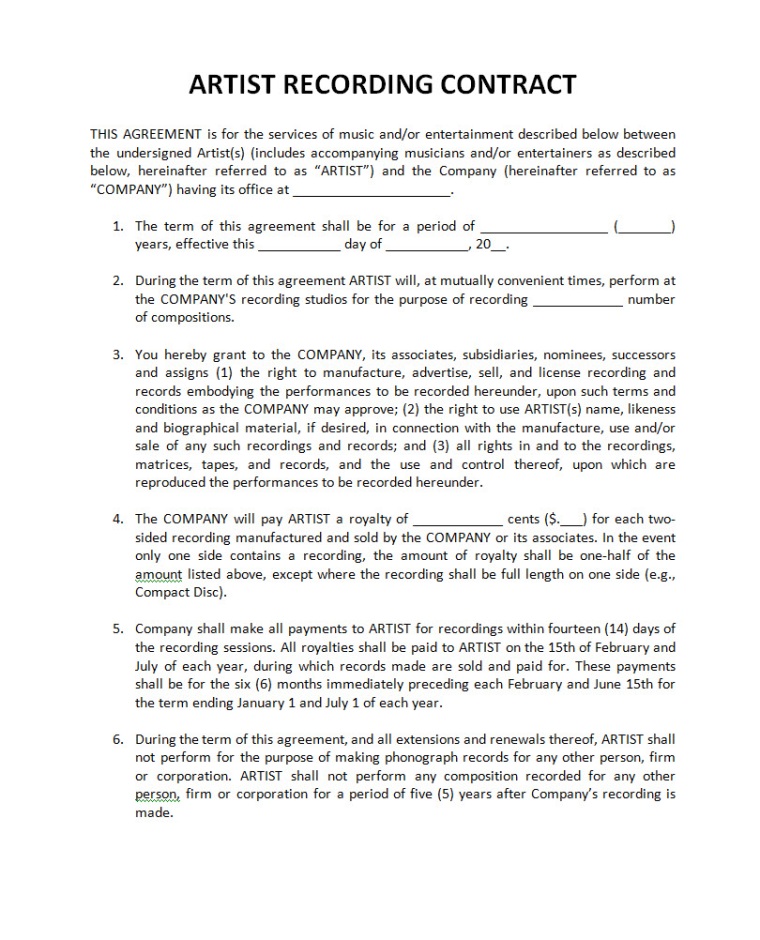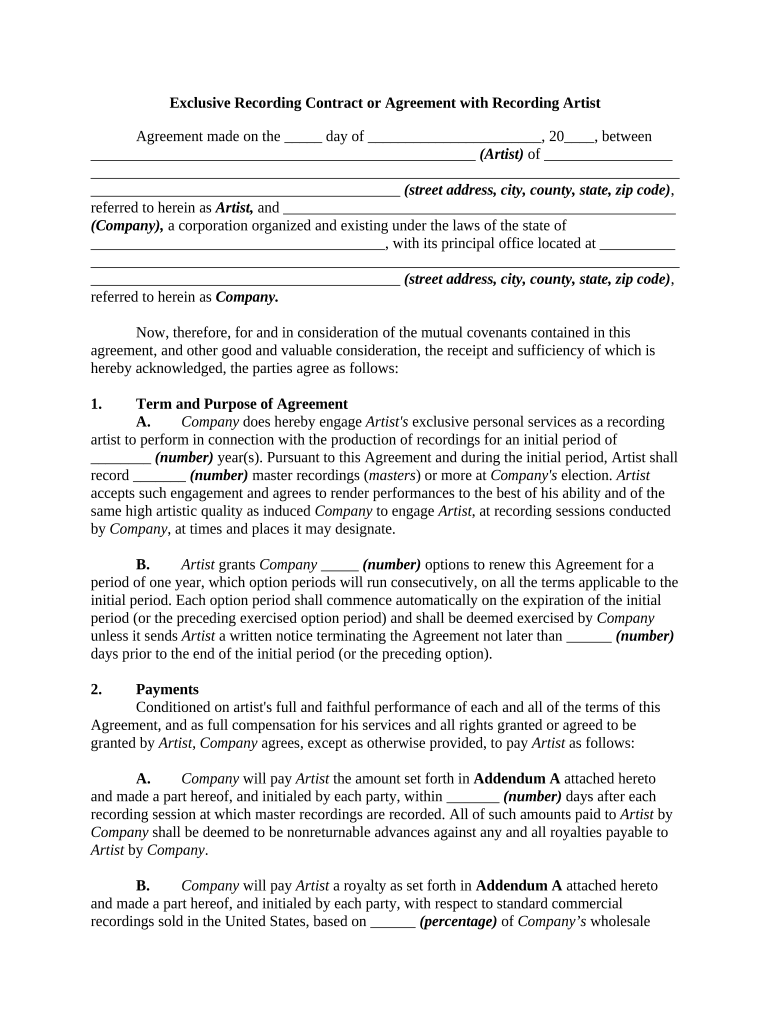In the music industry, a recording agreement is a crucial legal document that outlines the terms of a contract between an artist and a record label. This agreement protects both parties’ interests, ensuring that the artist is compensated for their work and that the record company is fairly reimbursed for its investment.
Let’s dive deeper into the what, why, and how of a recording agreement, along with some examples, tips, and samples for successful agreements.
What is a Recording Agreement?
A recording agreement is a legal contract that establishes the relationship between an artist and a record label. It outlines the terms and conditions under which the artist’s music will be recorded, distributed, and promoted by the record label. The agreement covers various aspects such as the rights and obligations of both parties, the payment structure, royalties, copyright ownership, and the duration of the agreement.
A well-drafted recording agreement ensures that all parties involved are clear about their responsibilities and expectations. It helps to avoid misunderstandings and disputes down the line, providing a solid foundation for a successful working relationship between the artist and the record label.

Why is a Recording Agreement Important?
Having a recording agreement is essential for both artists and record labels for several reasons:
- Protection of rights: A recording agreement clearly defines the rights of the artist and the record label. It ensures that the artist retains ownership of their intellectual property while granting the record label the necessary rights to exploit and distribute the music.
- Compensation and royalties: The agreement establishes the payment structure and royalty rates that the artist will receive for their work. This ensures that the artist is fairly compensated for their creativity and effort.
- Clear expectations: By clearly outlining the responsibilities and obligations of each party, the recording agreement helps to manage expectations. It reduces the potential for misunderstandings and conflicts between the artist and the record label.
- Contractual obligations: A recording agreement ensures that both parties fulfill their contractual obligations. It provides a legal framework that holds each party accountable for their commitments, preventing breach of contract issues.
- Flexibility: The agreement can also include provisions for future circumstances such as album releases, marketing strategies, and the possibility of renegotiation or termination of the contract.
How to Create a Recording Agreement
Creating a recording agreement requires careful consideration and attention to detail.
Here are some steps to guide you:
- Consult with legal professionals: It’s important to seek legal advice from professionals experienced in music industry contracts. They can help ensure that the agreement meets all legal requirements and protects your interests.
- Identify the parties involved: Clearly state the names and contact information of the artist and the record label. Include any additional parties involved, such as managers or producers.
- Define the scope of the agreement: Specify the scope of the agreement, including the duration, number of albums or songs covered, and any territorial limitations.
- Outline the rights and obligations: Clearly define the rights granted to the record label, such as the right to distribute, market, and promote the artist’s music. Specify the obligations of both parties, such as the artist’s commitment to deliver high-quality recordings and the record label’s responsibility for manufacturing and distribution.
- Establish payment and royalty structure: Detail the payment structure, including advances, royalties, and any additional payments. Specify the method and frequency of royalty calculations and payments.
- Include copyright and ownership provisions: Clearly state who owns the copyright to the recordings and how ownership may be shared or transferred.
- Address termination and dispute resolution: Include provisions for termination of the agreement, such as breach of contract or mutual agreement. Outline how disputes will be resolved, whether through arbitration, mediation, or legal action.
- Review and revise: It’s crucial to review the agreement thoroughly and make any necessary revisions before finalizing and signing it. Ensure that both parties fully understand and agree to the terms.
Examples




Tips for Successful Recording Agreements
Creating a successful recording agreement involves careful consideration of various factors. Here are some tips to ensure a successful agreement:
- Seek professional legal advice: Consulting with experienced legal professionals ensures that your agreement is legally sound and protects your interests.
- Be clear and specific: Clearly define each party’s rights, obligations, and expectations to avoid misunderstandings and conflicts.
- Consider future scenarios: Anticipate potential future circumstances and include provisions for album releases, marketing strategies, and possible contract renegotiations.
- Review and negotiate terms: Carefully review the terms of the agreement and negotiate any aspects that may need clarification or modification.
- Keep records and documentation: Maintain thorough records of all communication, payments, and contractual obligations to ensure transparency and accountability.
- Regularly review and update: As the music industry evolves, it’s essential to regularly review and update your recording agreement to adapt to changing circumstances.
In Conclusion
A recording agreement is a vital document that protects the interests of both artists and record labels. By clearly outlining the terms and conditions of the agreement, it ensures that artists are compensated for their work while record labels are fairly reimbursed for their investments.
Creating a well-drafted recording agreement requires careful consideration, legal advice, and attention to detail. By following the tips and examples provided, artists and record labels can establish successful working relationships and navigate the music industry with confidence.
Recording Agreement Template – Download